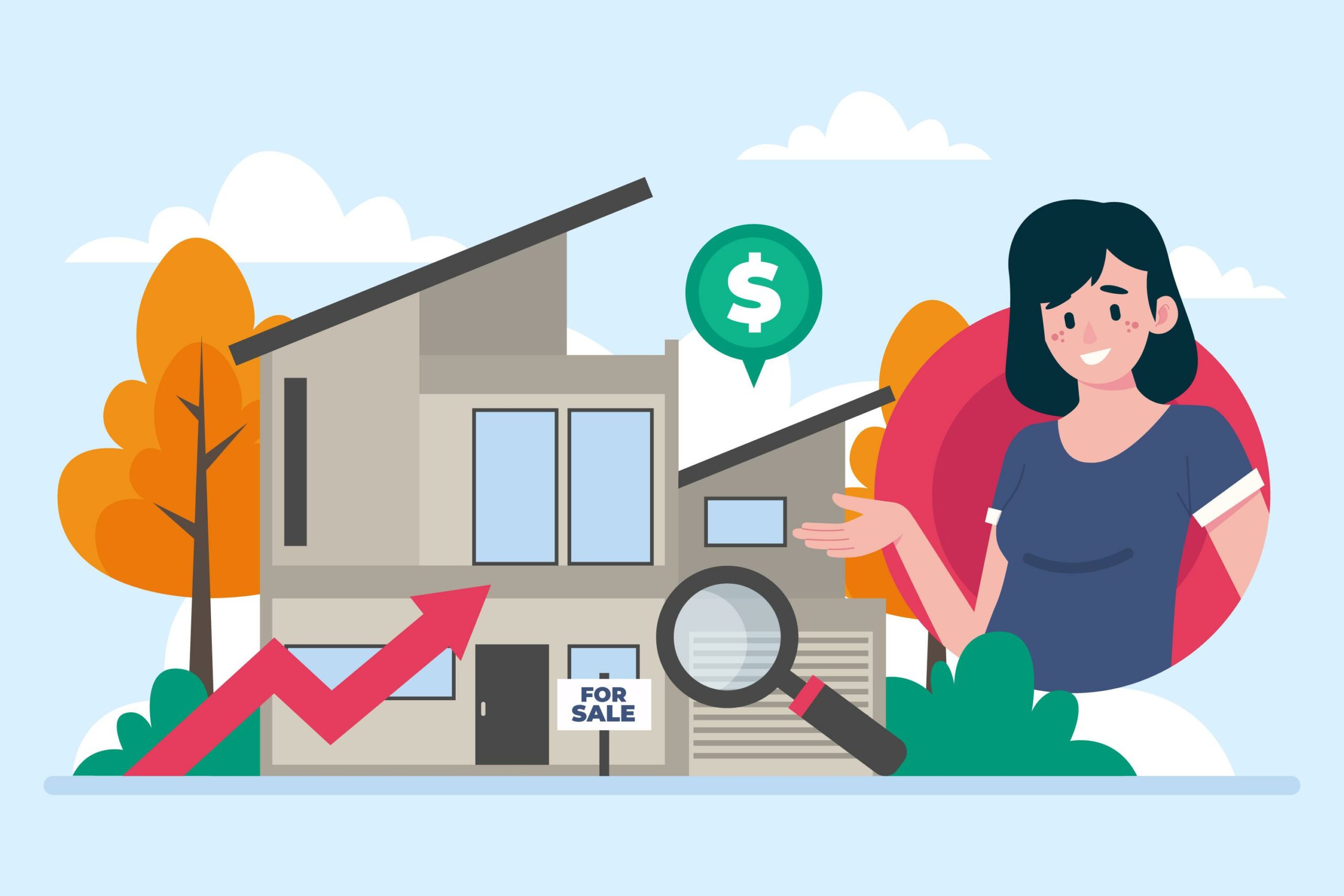
If you’re a homeowner looking for a way to tap into the equity you’ve built in your home, you might be considering a home equity loan or a home equity line of credit (HELOC). Both of these financial products allow you to borrow against the value of your home, but they work in different ways and have distinct advantages and disadvantages. In this comprehensive guide, we’ll explore the differences between home equity loan and HELOC, helping you make an informed decision about which option is right for you.
Understanding Home Equity
Before diving into the specifics of home equity loans and HELOCs, it’s essential to grasp the concept of home equity. Home equity is the portion of your home’s value that you own outright, which is calculated as the difference between your home’s current market value and the amount you still owe on your mortgage.
Home equity is a valuable asset that can be used to secure a loan or line of credit. Both home equity loans and HELOCs leverage this equity, but they have different structures and features.

Home Equity Loans
A home equity loan is a lump-sum loan that allows you to borrow a fixed amount of money using your home’s equity as collateral. This loan typically has a fixed interest rate and a predetermined repayment period, which is often 10 to 30 years. Here are some key features of home equity loans:
- Fixed Interest Rate: Home equity loans usually come with a fixed interest rate. This means that your monthly payments remain the same throughout the life of the loan, making it easier to budget and plan for your payments.
- Lump-Sum Payment: When you take out a home equity loan, you’ll receive the entire loan amount as a lump sum upfront. This can be useful for specific, one-time expenses, such as home renovations, debt consolidation, or large purchases.
- Predictable Repayment Schedule: Home equity loans have a set repayment schedule, allowing you to know precisely when your loan will be paid off. This predictability can be advantageous for borrowers who prefer stability and want to pay off their debts over time.
- Interest Deductions: In some cases, the interest paid on a home equity loan may be tax-deductible, depending on your individual circumstances and the tax laws in your area. It’s essential to consult a tax professional to understand the implications for your specific situation.
- Risk of Losing Your Home: Since your home serves as collateral for the loan, there’s a risk of foreclosure if you fail to make your payments. It’s crucial to make payments on time and ensure you can afford the loan.
HELOCs (Home Equity Lines of Credit)
A HELOC, or Home Equity Line of Credit, is a revolving line of credit that allows you to borrow money against your home’s equity. It’s similar to a credit card in that you can draw funds as needed, up to a predetermined credit limit, during what is called the “draw period.” Here are some key features of HELOCs:
- Variable Interest Rate: HELOCs typically come with a variable interest rate, which means that your monthly payments can fluctuate with changes in market interest rates. This can make budgeting more challenging, as your payments are not fixed.
- Revolving Credit: Unlike home equity loans, HELOCs provide access to a revolving line of credit. During the draw period (usually 5 to 10 years), you can borrow and repay funds as needed, up to your credit limit.
- Flexible Use of Funds: HELOCs are versatile and can be used for various purposes, such as home improvements, education expenses, emergencies, or even as a source of funds for investment opportunities.
- Interest-Only Payments: During the draw period, you may have the option to make interest-only payments, which can be beneficial for borrowers looking for lower initial monthly payments. However, it’s essential to understand that this does not reduce the principal balance.
- Risk of Market Fluctuations: The variable interest rate on HELOCs exposes borrowers to the risk of increasing monthly payments if interest rates rise. This can be a drawback, as it makes the overall cost less predictable.
- Potential Tax Deductions: Like home equity loans, the interest paid on a HELOC may be tax-deductible in some cases. However, recent changes to tax laws have limited these deductions, so it’s crucial to consult a tax professional for guidance.

Comparing Home Equity Loan and HELOC
Now that we’ve outlined the key features of home equity loan and HELOC, let’s compare them based on several essential factors to help you decide which option may be more suitable for your financial needs and goals.
- Interest Rates:
- Home Equity Loans: These loans typically come with fixed interest rates, providing stability and predictability. This is advantageous when you want to lock in a favorable rate, especially if market interest rates are expected to rise.
- HELOCs: HELOCs often have variable interest rates, which can make your monthly payments more unpredictable. While you may benefit from lower initial rates, there’s a risk of rates increasing over time.
- Access to Funds:
- Home Equity Loans: With a home equity loan, you receive a lump sum upfront. This is ideal for one-time expenses that have a specific cost, such as home renovations, debt consolidation, or major purchases.
- HELOCs: A HELOC provides a revolving line of credit, offering flexibility to access funds as needed during the draw period. This is advantageous when you have ongoing or unpredictable expenses.
- Repayment Terms:
- Home Equity Loans: These loans come with fixed repayment terms, making it easier to plan your budget and know when you’ll pay off the loan.
- HELOCs: HELOCs have a draw period during which you can borrow and a subsequent repayment period. The draw period is typically interest-only, and during the repayment period, you must pay both principal and interest. The length of these periods varies by lender and the terms of the HELOC.
- Monthly Payments:
- Home Equity Loans: With fixed interest rates and predictable repayment schedules, home equity loans offer consistent monthly payments.
- HELOCs: Monthly payments for HELOCs can fluctuate due to variable interest rates, potentially making it more challenging to budget and plan for payments.
- Tax Deductibility:
- Home Equity Loans: The interest paid on home equity loans may be tax-deductible, subject to certain limitations and tax laws.
- HELOCs: The tax deductibility of HELOC interest is also subject to specific conditions and recent changes in tax laws.
- Risk of Foreclosure:
- Home Equity Loans: Since your home serves as collateral, there’s a risk of foreclosure if you fail to make payments. It’s crucial to budget and ensure you can afford the loan.
- HELOCs: Similar to home equity loans, a HELOC is secured by your home, and missing payments could lead to foreclosure.
- Purpose of Borrowing:
- Home Equity Loans: These are suitable for specific, one-time expenses with a known cost. If you have a well-defined project or purchase in mind, a home equity loan may be a better fit.
- HELOCs: HELOCs are versatile and can be used for various purposes, including ongoing expenses or as a financial safety net for emergencies or opportunities.
- Draw Period:
- Home Equity Loans: Home equity loans do not have a draw period, as they provide a lump sum upfront.
- HELOCs: HELOCs have a defined draw period, during which you can access funds. Once this period ends, you can no longer borrow, and you enter the repayment phase.
- Credit Limits:
- Home Equity Loans: The loan amount is determined based on the available equity in your home and the lender’s policies.
- HELOCs: HELOCs come with a predetermined credit limit based on a percentage of your home’s appraised value, minus the balance of your mortgage.

Which Option Is Right for You?
The choice between a home equity loan and a HELOC ultimately depends on your financial situation, goals, and preferences. Here are a few factors to aid you in making your decision:
- Stability vs. Flexibility:
- If you prefer stability and predictability in your monthly payments, a home equity loan with a fixed interest rate might be the better choice.
- If you value flexibility and anticipate needing funds for various purposes over time, a HELOC provides the versatility you need.
- One-Time vs. Ongoing Expenses:
- If you have a specific, one-time expense in mind, such as a home renovation or debt consolidation, a home equity loan can provide the necessary funds.
- If your financial needs are ongoing or unpredictable, a HELOC’s revolving line of credit may be more suitable.
- Budgeting Skills:
- Consider your ability to manage fluctuating monthly payments. If you have a strong budget and can handle changes in your payments, a HELOC may work for you.
- If you prefer the simplicity of fixed payments and worry about budgeting with variable interest rates, a home equity loan may be a better fit.
- Interest Rate Expectations:
- Take into account the current interest rate environment and your expectations for future rate changes. If you believe rates will rise, locking in a fixed rate with a home equity loan could be advantageous.
- If you expect interest rates to remain stable or decrease, a HELOC’s variable rate may be more attractive initially.
- Tax Considerations:
- Consult with a tax professional to understand the potential tax deductions associated with both home equity loans and HELOCs. This can impact your decision.
- Long-Term vs. Short-Term Needs:
- Assess whether your borrowing needs are for the short term or long term. Home equity loans are well-suited for fixed, long-term projects, while HELOCs offer more flexibility for ongoing or short-term needs.
- Risk Tolerance:
- Recognize the risk of losing your home if you default on your payments. Only choose a home equity loan or HELOC if you are confident in your ability to manage the debt responsibly.
You can also read: Choosing the Best Finance Tracker App
Home equity loans and HELOCs are valuable financial tools that allow homeowners to leverage the equity they’ve built in their properties. The choice between these two options depends on your specific financial goals, preferences, and circumstances. Home equity loans offer stability with fixed interest rates and predictable payments, making them suitable for one-time, well-defined expenses. On the other hand, HELOCs provide flexibility, allowing you to access funds as needed during a draw period, which can be advantageous for ongoing or unpredictable expenses.
Before making a decision, it’s crucial to assess your financial situation, budgeting skills, interest rate expectations, and the purpose of your borrowing. Consult with lenders and financial professionals to understand the terms, conditions, and tax implications associated with both home equity loans and HELOCs. Regardless of your choice, responsible financial management is key to ensuring the security of your home and the success of your borrowing endeavor.